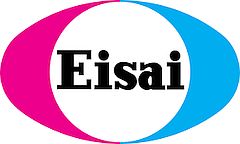Eisai Publishes Potential Economic Value of Investigational Lecanemab in Peer-Reviewed Neurology and Therapy Journal
By:
JCN Newswire
June 21, 2022 at 22:05 PM EDT

TOKYO, Jun 22, 2022 - (JCN Newswire) - Eisai Co., Ltd. today announced publication of results from an early phase evaluation that aimed to estimate potential economic value of its investigational anti-amyloid-beta (Abeta) protofibril antibody lecanemab in people living with early Alzheimer's disease (AD) using a validated disease simulation model, AD Archimedes Condition Event (AD ACE) model1,2,3 from the healthcare payer and societal perspectives in the United States, in the peer-reviewed journal Neurology and Therapy. This is the second publication of lecanemab's potential value. It follows the evaluation of the long-term health outcomes using simulation modeling of lecanemab published in Neurology and Therapy in April 2022.4 While the healthcare payer perspective focuses on direct care costs (e.g., outpatient and inpatient services, medications, intervention costs, nursing home and home healthcare services), the societal perspective further considers societal costs (e.g., productivity loss and informal care costs). As reported in the previous publication, it was suggested that compared to standard of care* (SoC), individuals treated with lecanemab in addition to SoC (lecanemab+SoC) may potentially experience slower disease progression to mild, moderate and severe AD from baseline by 2.51, 3.13 and 2.34 years on average, respectively. The preliminary results of this model-based simulation could possibly translate into additional quality-adjusted life years (QALY**) and reduction in the formal and informal care costs***. Additionally, the AD ACE model framework used in this study allowed assessment of the potential value of lecanemab in different scenarios and sensitivity analyses, including the impact of patient subsets, alternative treatment stopping rules**** and potential dosing regimens as well as major sources of uncertainty.
Eisai is committed to conducting and sharing these types of clinical and socioeconomic analyses to establish trust as we work to potentially bring lecanemab to people living with early AD who have confirmed presence of amyloid pathology in the brain. To that end, Eisai would like to provide a common foundation for stakeholders' discourse regarding the potential clinical and socioeconomic value of lecanemab from the societal perspective, not to assign a price for lecanemab at this time.
This model-based simulation was conducted using the results of a Phase 2b clinical trial (Study 201) evaluating the efficacy and safety of lecanemab for early AD with confirmed amyloid pathology as well as published literature. It also estimated the potential economic value of lecanemab+SoC over a broad range of willingness-to-pay thresholds from $50,000 to $200,000 per QALY gained as recommended by the Institute for Clinical and Economic Review (ICER)*****. Lecanemab+SoC was predicted to result in a gain of 0.61 QALYs and a decrease in total non-treatment costs of $8,707 per person from the healthcare payer perspective (Societal perspective: 0.64 QALYs gain and $11,214 decrease) compared to the SoC for patients with early AD who have confirmed presence of amyloid pathology. The potential annual value-based price (VBP) of lecanemab was estimated at $9,249 to $35,605 (Societal perspective: $10,400 to $38,053) based on this early economic assessment.
ICER's value framework5 indicates that value cannot be wholly derived from measures of clinical and cost-effectiveness, so contextual considerations and an examination of other benefits and disadvantages are also added into the framework when assessing long-term value. This may lead to using the societal perspective and higher end of the broad range of willingness-to-pay threshold in estimating the justifiable price of lecanemab, given the large societal burden of AD relative to direct healthcare costs.
Many people living with AD received informal care from their family and friends totaling more than 16 billion hours of unpaid care valued at $271.6 billion in the U.S. in 2021.6 These predicted and simulated findings suggest that early treatment with lecanemab may reduce these costs and economic burdens, and provide insights for healthcare decision-makers regarding the potential clinical and socioeconomic value of lecanemab. The Phase 3 lecanemab Clarity AD data will soon be available to inform the model inputs and refine the findings. In the event that lecanemab receives the U.S. Food and Drug Administration's (FDA) approval, Eisai may determine a VBP using this framework along with other considerations, such as affordability, health system sustainability, etc.
"Eisai's goal is to create therapies, such as our investigational anti-amyloid beta protofibril antibody lecanemab, that may help impact the anxieties of people living with Alzheimer's disease and their families. For Alzheimer's disease, it is important to evaluate the holistic value of therapies taking into account not only medical costs but also the immense societal costs," said Ivan Cheung, Senior Vice President, President Neurology Business Group and Global Alzheimer's Disease Officer, Eisai Co., Ltd., Chairman and CEO, Eisai Inc. "As part of Eisai's commitment to our human health care mission, trust and transparency, we will continue to publish data and information about lecanemab and look forward to sharing the results of the lecanemab confirmatory Phase 3 Clarity AD clinical trial this fall."
Eisai completed lecanemab's rolling submission of a Biologics License Application (BLA) for the treatment of early AD to the FDA under the accelerated approval pathway in May 2022. The Clarity AD Phase 3 clinical study for lecanemab in early AD is ongoing and completed enrollment in March 2021 with 1,795 patients. The readout of the primary endpoint data of Clarity AD will occur in the fall of 2022. The FDA has agreed that the results of Clarity AD, when completed, can serve as the confirmatory study to verify the clinical benefit of lecanemab. Dependent upon the results of the Clarity AD clinical trial, Eisai may submit for full approval of lecanemab to the FDA during Eisai's fiscal year 2022, which ends in March2023. In Japan, in March 2022, Eisai initiated submission of application data to the Pharmaceuticals and Medical Devices Agency (PMDA) under the prior assessment consultation system with the goal of obtaining early approval for lecanemab, and aims to file for the manufacturing and marketing approval based on the results of Clarity AD during Eisai's fiscal year 2022. Also, in Europe, based on the results of the Clarity AD study, Eisai plans to submit a new drug application in fiscal year 2022.
This release discusses investigational uses of an agent in development and is not intended to convey conclusions about efficacy or safety. There is no guarantee that such an investigational agent will successfully complete clinical development or gain health authority approval.
* Standard of Care (SoC) for AD currently consists of lifestyle modifications and pharmacologic treatment of symptoms.
** The quality-adjusted life year (QALY) is a measure of the value of health outcomes. Since health is a function of length of life (i.e., quantity) and quality of life (QOL), the QALY was developed as an attempt to combine the value of these attributes into a single index number. One QALY equates to one year in perfect health. QALY scores range from 1 (full health) to 0 (dead). For example, a new intervention may increase length of life by 3 years and improve quality of life by 70% (QALY score of 2.1) compared to an existing intervention that may increase length of life by 3 years and only improve QOL by 50% (QALY score of 1.5), the incremental QALY for this new intervention will be 0.6 QALYs.
*** Formal and informal care costs do not include lecanemab drug cost.
**** Alternative treatment stopping rules were explored in scenario analyses where treatment with lecanemab was stopped after a fixed duration of 1.5, 3 and 5 years.
***** ICER is a non-profit research organization in the U.S. that evaluates the evidence on the clinical and economic value of prescription drugs, medical tests, devices and health system delivery innovations.
1 Kansal AR, Tafazzoli A, Ishak KJ, Krotneva S. Alzheimer's disease Archimedes condition-event simulator: Development and validation. Alzheimers Dement (NY). 2018;4:76-88. Published 2018 Feb 16. doi:10.1016/j.trci.2018.01.001.
2) Tafazzoli and Kansal. Disease simulation in drug development, External validation confirms benefit in decision making. The Evidence Forum. 2018. bit.ly/3NgEeDD
(3) Tafazzoli A, Weng J, Sutton K, et al. Validating simulated cognition trajectories based on ADNI against 436 trajectories from the National Alzheimer's Coordinating Center (NACC) dataset. 11th edition of Clinical Trials on 437 Alzheimer's Disease (CTAD); Barcelona, Spain: 2018.
(4) Tahami Monfared AA, Tafazzoli A, Ye W, Chavan A, Zhang Q. Long-Term Health Outcomes of Lecanemab in Patients with Early Alzheimer's Disease Using Simulation Modeling. Neurol Ther 11, 863-880 (2022). https://link.springer.com/article/10.1007/s40120-022-00350-y.
(5) ICER Value Framework 2020-2023. 2022. bit.ly/39HjYO3
(6) Alzheimer's Association. 2022 Alzheimer's Disease Facts and Figures 2022 Available from: bit.ly/3bkCR9V
Media Inquiries:
Public Relations Department,
Eisai Co., Ltd.
+81-(0)3-3817-5120
Eisai Inc. US
Libby Holman
Libby_Holman@Eisai.com
201-753-1945
Copyright 2022 JCN Newswire. All rights reserved. www.jcnnewswire.com
More News
View More
Via MarketBeat
Tickers
AMZN

Tesla Just Got Called a “Must Own” Stock—Here’s Why ↗
Today 7:01 EST
Via MarketBeat
Tickers
TSLA

Why Gold Loves Trump as Much as Trump Loves Gold ↗
November 26, 2025

Google's Gemini 3 Sends Broadcom Soaring: TPUs Take Center Stage ↗
November 26, 2025

Palantir Isn’t Just Riding the AI Boom—It’s Orchestrating It ↗
November 26, 2025
Recent Quotes
View More
Stock Quote API & Stock News API supplied by www.cloudquote.io
Quotes delayed at least 20 minutes.
By accessing this page, you agree to the Privacy Policy and Terms Of Service.
Quotes delayed at least 20 minutes.
By accessing this page, you agree to the Privacy Policy and Terms Of Service.
© 2025 FinancialContent. All rights reserved.
>